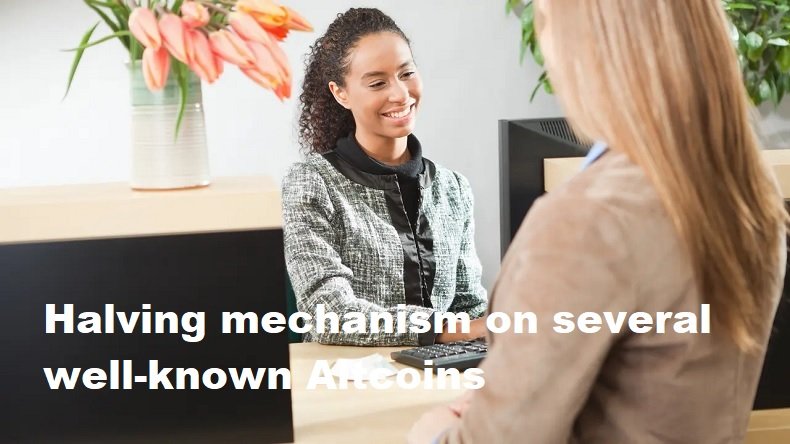Introduction to Halving Day and Altcoins
Halving Day is one of the important events in the world of cryptocurrency, especially Bitcoin. This phenomenon refers to the halving of the value every four years of the rewards Bitcoin miners receive in return for their efforts to create new blocks and confirm transactions on the blockchain. Halving Day occurs every 210,000 blocks are mined, which is estimated to take around four years. Halving Day has great significance in the Bitcoin ecosystem because it influences the new supply of bitcoin entering the market. As mining rewards decrease, miners’ incentives to add more blocks to the blockchain become smaller, and this could lead to deflationary pressure on the price of bitcoin. The reduction is designed to control inflation and mimic the logarithmic growth pattern also found in precious metals such as gold.
Meanwhile, the term altcoin refers to a digital currency other than Bitcoin that was created as an alternative. Altcoins are created by modifying Bitcoin’s source code or building a new technology platform from scratch to create innovative and efficient solutions that are not available through the Bitcoin protocol. Some popular altcoins include Ethereum, Ripple, Litecoin, and many others. Altcoins emerged to overcome various obstacles or limitations faced by Bitcoin, both in terms of transaction speed, costs, or anonymity. Although some altcoins have managed to gain significant popularity and usage, Bitcoin remains the most well-known and widely accepted cryptocurrency across platforms. Nevertheless, development and innovation in the altcoin industry continues in an effort to advance the world of cryptocurrency.
Halving mechanism on several well-known Altcoins
The Halving mechanism is a process that occurs in many cryptocurrencies, including Litecoin. Halvings on Litecoin occur every 840,000 blocks, which takes approximately four years. This process aims to reduce the inflation rate by cutting miner rewards in half over time. Like Bitcoin, Litecoin also uses a proof-of-work system, and this Halving mechanism was created to control the supply of Litecoin circulating on the market. As an example of the Halving mechanism on Litecoin, initially miners will receive 50 LTC per block they successfully mine. After the first Halving process occurs, the reward will drop to 25 LTC per block. Then, at the next Halving, the incentive will be reduced to 12.5 LTC per block. The process continues until all 84 million LTC have been mined and circulated on the market.
Meanwhile, ZCash has a different approach in dealing with periodic drops in mining rewards. As an alternative to the Halving mechanism, ZCash applies a 20% percentage reduction model for mining incentives every four years. This model is called the “Harmonic Mean,” where mining incentives will continue to gradually decrease until the entire amount of ZCash, namely 21 million coins, has been mined. Compared to the halving process that occurs suddenly in some Altcoins, ZCash’s approach has a more subtle impact on decreasing mining rewards. This method makes changes in the market more predictable and reduces drastic price fluctuations caused by the Halving period. As a result, the entire cryptocurrency ecosystem can adapt more efficiently in response to various economic factors.
Comparison between Halving Day in Altcoins and Bitcoin
Halving Day is a common phenomenon in the crypto world, especially in Bitcoin, where mining rewards for miners are halved every four years. This concept is implemented to maintain the scarcity of crypto assets and ensure their selling value remains stable. Some Altcoins also follow a similar concept by having their own Halving Day mechanism. The reason why Altcoins employ this concept has to do with the desire to emulate Bitcoin’s success and create a positive effect on the price of their assets. The implementation of Halving Day in Altcoins is believed to have a significant impact on prices, just as it did with Bitcoin. When mining rewards decrease, the amount of crypto assets that will be sent to the market also decreases. This can create shortages, which in turn will drive demand and prices higher. For example, Litecoin is one of the Altcoins that has experienced a significant price increase following their Halving Day event.
Apart from price influences, asset value protection is also the reason why Altcoins implement Halving Day. Hedging is an asset’s ability to help investors protect their portfolios from unwanted market price fluctuations. By periodically reducing mining rewards, Altcoins can help maintain the stability of their value and make them more attractive to investors as a hedge against inflation and market volatility. Although many Altcoins have adopted the Halving Day concept, some of them have different approaches in managing mining reward drops. Some Altcoins choose to reduce mining rewards by a fixed amount or a certain percentage every certain time period. Meanwhile, there are also Altcoins that use a mining difficulty adjustment algorithm to achieve a gradual reduction in rewards. These approaches reflect variations in the economic structure and long-term goals of each Altcoin.
Halving Day implications for the economy and market value of Altcoins
The implications of Halving Day for the economy and market value of Altcoins are very significant because this affects the inflation rate, supply and market value of the Altcoin in question. For example, reducing mining rewards will reduce the speed at which new currency is created, thereby slowing the rate of inflation and increasing the supply shortage of Altcoins. The immediate impact of the Halving on the digital economy is that miners may experience higher operational costs and receive fewer Altcoins in return. This may lead some less efficient miners to close their operations, thereby reducing market supply. Apart from the negative impact on miners, the Halving process also signals scarcity with the potential to increase the demand and market value of Altcoins.
Predictions of the Halving’s long-term impact on Altcoin popularity and adoption vary widely, and depend on market response and the ability of the ecosystem in question to adapt. If the value of a coin experiences appreciation in the long term due to the Halving, then more investors will be interested in investing their funds in that Altcoin. As a result, the popularity and adoption of Altcoins will increase as more market players see the profitable prospects of these digital assets. However, it must be remembered that the popularity and adoption of Altcoins is not only based on the Halving phenomenon, but also on various other factors such as technological development, regulatory support, and relevant industry partnerships. To accurately understand the impact of the Halving, continued monitoring of various aspects of the development of the blockchain ecosystem in question is required. Therefore, investors must always consider the risks and opportunities that exist before making investment decisions on certain crypto assets.









